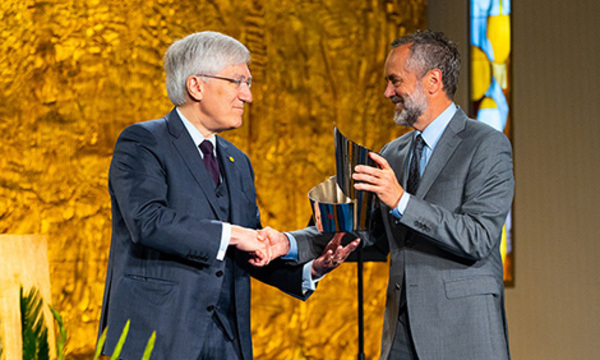You might not think that something as colossal and as well known as Nehemiah’s wall would be hard to find. But this 15-foot thick stone wall eluded archaeologists for centuries — causing some scholars to suggest that it never existed.
But, on Nov. 8, 2007, at a conference held at Bar Ilan University in Israel, Hebrew University archaeologist Eilat Mazar announced the discovery of a 30-meter section of the wall made famous by the biblical account of Nehemiah.
The wall was unearthed in February 2007 in the ancient City of David, just south of the old city of Jerusalem, during a dig jointly sponsored by the Shalem Center, a Jerusalem research institute, and the City of David Foundation, a nonprofit organization for the preservation of the biblical City of David. It was found during an excavation of what Mazar believes to be King David’s palace.
What led to the recent identification of the wall was the structural decay of a stone tower on the northern end of the excavation site. The tower — previously believed to have been builtin 142-137 B.C. during the Hasmonean Dynasty — was on the brink of collapse. Members of Mazar’s team made emergency attempts to prop it up. In doing so, they began an unplanned dig that led to a treasure trove of artifacts hidden underneath the tower.
The artifacts — including arrowheads, pottery, seals and even the bones of two large dogs — were dated no later than the Persian period (sixth to fifth centuries B.C.). This led to the revised dating of the tower and wall to the Persian period — the time that is specified in the Bible for the construction of Nehemiah’s wall.
Not all scholars agree with the implications of Mazar’s findings. Israel Finkelstein, a professor of archaeology at Tel Aviv University, argues that since the artifacts were not connected to a floor or other structural part of the wall, then the wall could have been built later.
Yet, Richard Rigsby, professor of Old Testament and Semitics at Biola’s Talbot School of Theology, rallied to Mazar’s cause saying, “Finkelstein is overstating his case. The language he’s using is more the language of debate than that of scholarship.”
Rigsby attributed Finkelstein’s skepticism to a “friendly competition” between the archaeologists at Tel Aviv’s University and those at Hebrew University. “They’re both trying to win the Super Bowl of Israeli archaeology,” he said.
So, Finkelstein doesn’t want to concede Mazar’s discovery, according to Rigsby.
But after seeing the wall first hand, Rigsby is convinced it’s Nehemiah’s Wall. He, along with 47 Talbot students and their family members, visited the site in January, during their stay in Jerusalem on the Talbot/Bible Lands Program tour. Though Mazar was not present, the other archaeologists invited the group to see the excavation. After viewing the location where the artifacts were found, Rigsby said that they certainly go with the wall even though they are not attached to the floor.
“The floor where the artifacts were found intersects the wall. It appears to be genuinely Nehemiah,” he said.
According to the biblical account, Nehemiah — a Jewish cupbearer to the Persian king, Artaxerxes — wanted to rebuild the broken wall surrounding Jerusalem after hearing of the plight of the Jews who had gone back there after their Babylonian exile. Nehemiah successfully petitioned the king to allow him to take a leave of absence from his court duties to help them. Despite opposition from the surrounding peoples, he consolidated the disheartened Jewish people into a unified and inspired working force. By God’s hand they did the unthinkable — they repaired the wall swiftly, in a mere 52 days.
Thomas Finley, chair of the Old Testament and Semitics department at Talbot, said that for Christians who already believe in the reliability of the Bible the discovery is “not earth shattering, but it shows that we have even more of a historical document in the Bible.” Yet, he admits that he’s personally delighted by the find.
“That we have a piece of the wall is kind of exciting,” Finley said.
 Biola University
Biola University.jpg)

